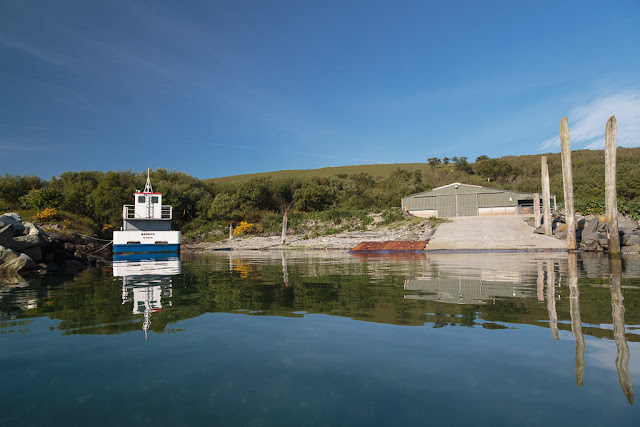Once we had negotiated the reefs exposed by low tide, the upper beach on the west coast of Inchmarnock was a broad expanse of cobbles.
We set up camp at the top of the beach and set to preparing our evening meal.
We had a grandstand view across the Sound of Bute to the rocky ridges of the north Sannox mountains of Arran. The notch of Ceum na Cailich, (the Witch's Step) and the granite tors on the summit of Caisteal Abhail (this means "castle of death" not "stronghold of the ptarmigan" as you may read elsewhere). A yacht was beating up the Sound into the cold northerly wind which also brought the remarkably clear air.
Due to the chill wind we wasted no time in getting the fire and...
...the baked potatoes on.
This must be one of the best views in Scotland and we had it all to ourselves until...
...what I thought was Sammy the otter put in an appearance. He ran along the beach from where a little trickle of a burn issued into the sea.
He made for his favourite fishing...
...pool where he caught several sea urchins before...
...heading home again. What a place, we were just 50km from my house in Glsgow but there was not a sight of human habitation.
I am grateful to Ian and Ben (see comments below) for correctly identifying this animal as a mink. The first unconfirmed sighting of a mink on neighbouring Bute was in 1981 and the first confirmed report was a dead mink at the north of Bute in 1982. Since then numbers have increased. Local naturalist JA Gibson has published an account "Atlas of Bute and Cumbrae vertebrates, 1980". An update
Supplementary notes on Bute vertebrates was published in the Buteshire Transactions in 2004. In it Gibson writes about the mink "I believe it has not yet reached Inchmarnock." and "During a visit to Inchmarnock in 2001 no mink were seen and there was no obvious predation on eider nests." It is sad that the mink is now indeed on Inchmarnock.




























































